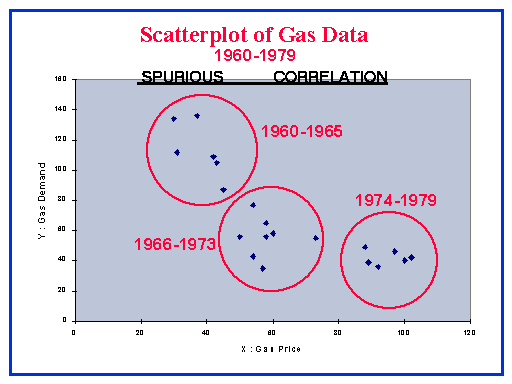| We show how gas demand levels (target or DEPENDENT variable) seems to vary with the price of the gas (INDEPENDENT variable) for a series of gas utilities in a large country. The data relates to what an economist would call the Price/Demand relationship and is an example of Simpson's Paradox. |  |
|---|





